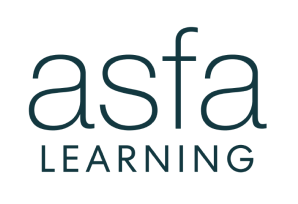Greenwashing occurs when a company—deliberately or otherwise—projects the perception that it and its products are environmentally more sustainable than they actually are. Also referred to as ‘green sheen’, greenwashing is attempting to cash in on growing consumer demand for all things green.
As a result, a growing issue for investors is how to avoid companies who don’t practice what they preach. How do funds strategically—and with certainty—only invest in companies with certified, credible sustainability practices?
The way forward for SRI labels
Socially Responsible Investing (SRI) labels are useful for retail investors to better understand what they invest in, as it effectively provides a stamp of approval that what they buy is good quality.
However, strategies that only apply simple exclusions and are still labelled as being sustainable should be a thing of the past. Investing sustainably is also much more difficult than buying a set of environmental, social and governance (ESG) scores and applying it to a portfolio.
Furthermore, it’s important these labels are not too prescriptive about how sustainability is implemented in the funds.
There are clearly areas that sustainable investors want to avoid, such as tobacco, weapons, breaches of labour standards and human rights, and certain types of fossil fuels like thermal coal.
Other areas, however, are less clear. Traditional fossil fuels, for example, are a big contributor to climate change, however, they’re still widely used and needed. There are those who believe that energy companies are both part of the problem and the solution.
The question is whether being invested in these companies and engaging with them might be a better way of creating change than avoiding them all.
Current labels do differ in their approach, largely because the global approach to sustainability investing differs so greatly. The French SRI label, for example, focuses more on the investment approach, process and transparency. It’s externally verified so more stringent in how it’s assessed, with the right data, processes and procedures needed to obtain the label.
The Belgian label is much more prescriptive, specifically on what not to invest in. However, even this leaves a lot of room to maneuver, and asset managers still need to do their own research.
Transparency, of course, is key – asset managers need to clearly show what is and what is not part of the strategy of the fund, no matter whether it is called sustainable or responsible, or something else entirely.
The risk is that it can become a box-ticking exercise. If funds do exactly what is needed to gain the label, they have no incentive to do their own research, to really think about sustainability at a deeper level, or to innovate.
If the label is too prescriptive it will only be attainable for a small number of funds and sustainability will remain a niche.
Labels should be focused more on making sure that the fund manager communicates what the strategy entails and shows that it does what it promises. A certain level of minimum standards can definitely be required, but again, not too prescriptive.
Does the strategy stack up financially?
A strategy is only sustainable if it’s also financially sustainable. How do long-term ESG trends and external costs such as climate change, loss of biodiversity and rising inequality lead to changes in business models? ESG investing no longer means only reducing an investment universe to the ‘best-scoring’ names. It means thinking hard about sustainability and how it affects companies and investment strategies.
If two stocks have equal (financial) factor scores, the one with the better ESG score could for example have a higher weight in an integrated strategy. In a fundamental equity strategy, ESG could affect the valuation, or the target price if analysed systematically.
Structurally integrating ESG information into the investment process helps investment teams make better decisions. It does not, however, reduce the universe, and they are still allowed to invest in companies with low ESG scores so long as they believe the risks are more than priced into the market.
This method of integrating ESG, although infinitely more difficult and profound in its application than only using ESG scores to reduce the universe, is often not categorised as a sustainable strategy. Clients who want to invest in sustainable strategies simply do not want to invest in ‘bad’ ESG companies, even if this is already reflected in the share price.
Consideration for active ownership
Another way of implementing sustainability is through active ownership. Active owners should adopt a structured approach in tackling themes that other investors are not even thinking of yet. For instance, this year, Robeco—as an active owner—started to engage on digital healthcare and the social impact of artificial intelligence. Both themes are very much forward looking and related to both new technologies and sustainability issues: the first aiming to tackle rising health care costs, and the second looking into the social risks that might occur in the long term.
Voting behavior is also interesting. Research shows that some of the larger (passive) investors almost always vote with a management’s recommendation, even on shareholder proposals relating to environmental and social issues. However, social and environmental shareholder proposals are becoming better formulated and more in line with long-term shareholder value creation.
So, as the adoption of sustainability investing continues to rise, so too do the challenges associated with the process. How should SRI labels be applied and, perhaps more importantly, how should they be monitored? And are there alternative means for investors to access SRI funds, such as through active ownership? Through each part of this process, transparency is vital.








